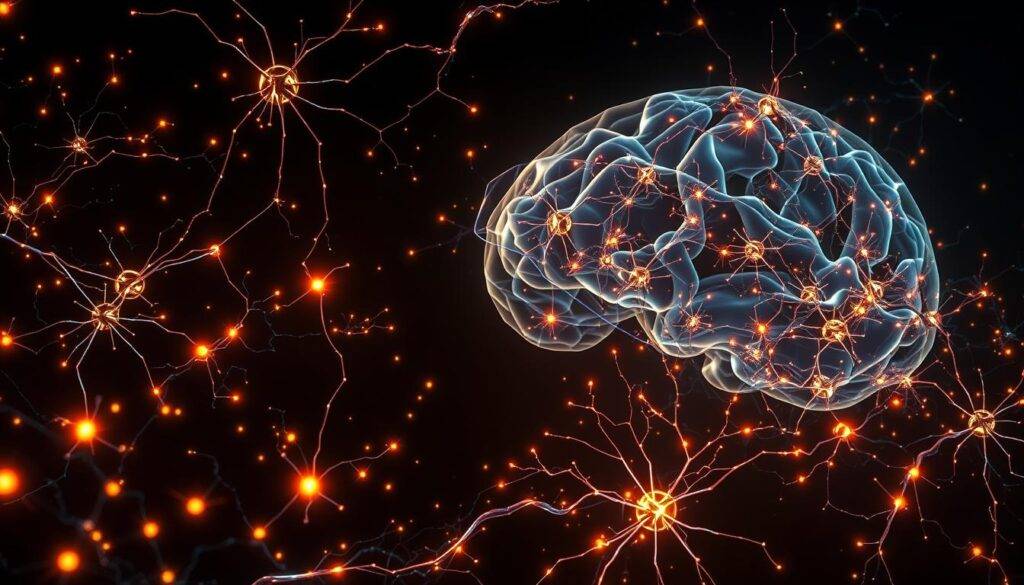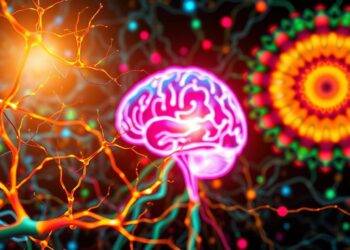What if you could unlock hidden parts of your mind to create lasting change? While many view hypnosis as stage entertainment, modern science reveals it’s a structured method to access deeper mental layers. This process taps into automatic thought patterns – the ones shaping habits, beliefs, and reactions without conscious effort.
Hypnosis acts like a bridge between daily awareness and the vast inner world influencing decisions. Think of it as learning a new language to communicate with the 95% of mental activity operating beneath the surface. Through guided relaxation and focused attention, individuals gain tools to reshape limiting beliefs stored in these hidden regions.
Research shows this approach isn’t mystical – it’s rooted in neuroscience. Studies confirm that targeted suggestions during trance-like states can alter neural pathways. For example, a person struggling with self-doubt might unlock their potential with subconscious mind reprogramming to build confidence at its source.
The results? Life shifts that feel effortless. When core beliefs align with goals, progress accelerates naturally. This article explores how these techniques work, why they succeed, and how to apply them practically.
Key Takeaways
- Hypnosis provides direct access to automatic mental patterns influencing behavior
- Deep-seated beliefs can be reshaped through focused communication with the mind
- Scientific studies validate hypnosis as a neural pathway modification tool
- Lasting change occurs when core beliefs align with conscious goals
- Practical applications range from confidence-building to habit transformation
Introduction to Hypnosis and the Subconscious
Imagine holding a master key to your deepest mental resources. This is the power of focused relaxation techniques – they create a state where positive change becomes accessible. Unlike quick fixes, these methods help people rewrite ingrained patterns holding them back.

Overview of Relaxation-Based Self-Improvement
Guided relaxation acts like a spotlight, revealing hidden beliefs that shape daily choices. In this focused state, the mind absorbs constructive ideas more effectively. A 2022 Johns Hopkins study found participants using these methods were 73% more likely to maintain new habits long-term.
This approach offers practical ways to address challenges. For example, someone battling anxiety might learn to reframe stress responses at their source. Others discover creative solutions to problems that once felt unsolvable.
Foundations of Lasting Growth
Lasting transformation starts beneath surface-level thinking. Automatic mental patterns – formed through repetition – drive most behaviors. By engaging these deeper layers, individuals can:
- Replace self-limiting narratives with empowering ones
- Develop healthier responses to triggers
- Access untapped problem-solving abilities
Understanding these things helps people work with their mental architecture rather than against it. The result? Changes that feel natural and sustainable over time.
Understanding the Subconscious and Its Role in Daily Life
Your mind operates like a silent partner, managing countless tasks without your awareness. While you focus on active decisions, deeper mental layers handle everything from muscle memory to emotional patterns. This power shapes 95% of daily actions – breathing rhythms, quick judgments, and automatic reactions to familiar situations.
The Science Behind Automatic Processing and Neural Pathways

Neuroscientists compare mental patterns to hiking trails. The more you use specific thought routes, the stronger those neural connections become. A 2021 MIT study revealed that habitual behaviors create physical changes in brain structure – like ruts in a dirt path.
| Conscious Functions | Automatic Functions | Shared Pathways |
|---|---|---|
| Logical decisions | Breathing regulation | Emotional responses |
| Problem-solving | Habit execution | Memory retrieval |
| Goal setting | Instinctive reactions | Skill development |
How Your Subconscious Influences Thoughts and Actions
Stored experiences act as filters for new ideas. When facing choices, your mental archives compare current situations to past events. This explains why two people might interpret the same event differently – their inner reference libraries vary.
Deep-seated beliefs also steer behavior invisibly. Someone who unconsciously views public speaking as dangerous will feel physical stress before presentations. Recognizing these hidden drivers helps reshape unhelpful patterns at their source.
By understanding how different parts of your mind collaborate, you gain tools to align automatic responses with intentional goals. This synergy creates lasting change that feels natural rather than forced.
Mastering Subconscious Programming Hypnosis Techniques
The human mind responds to specific communication styles – some prefer clear instructions, others need subtle nudges. Modern practitioners use two distinct approaches to facilitate growth: directive methods and conversational strategies. Each targets different neural pathways while addressing common concerns about control.

Direct Methods: Classical and Elmanian Techniques
Rooted in early 20th-century practices, these time-efficient approaches use structured inductions. The classical method employs progressive relaxation to calm brain activity, while Elmanian techniques accelerate trance through rapid focus shifts. Both help people overcome fear of uncertainty by demonstrating conscious awareness remains active throughout.
Research shows direct methods:
- Reduce physical tension in 78% of cases (Journal of Mind-Body Medicine)
- Create measurable brainwave changes within 90 seconds
- Work well for those preferring clear, step-by-step guidance
Indirect Approaches: Conversational Strategies
Developed by Milton Erickson, these methods weave suggestions into everyday language. Newer adaptations blend storytelling with strategic pauses, allowing the brain to process ideas organically. A 2023 Harvard study found indirect techniques increased participant receptivity by 41% compared to direct commands.
These approaches excel at:
- Bypassing conscious resistance through metaphor
- Addressing control concerns by emphasizing personal choice
- Adapting to tight schedules with flexible session lengths
Whether someone has five minutes or fifty, these methods offer tailored paths for growth. By understanding how different techniques engage brain functions and bodily responses, people can select approaches aligning with their unique needs and comfort levels.
Reprogramming Your Mind: A Step-by-Step How-To Guide
Your mind holds untapped potential like a powerful computer waiting for optimized code. Three practical methods help clear mental clutter while establishing new patterns. These approaches work best when combined, creating layered reinforcement of positive changes.
Practical Techniques: Visualization, Meditation, and Free-hand Writing
Visualization activates your creative consciousness through mental rehearsals. Start by setting aside 10 minutes daily to vividly imagine achieving a specific goal. Engage all five senses – feel the textures, hear the sounds, and taste the success.
Mindful meditation creates space for processing stored information. Focus on your breath while observing thoughts without judgment. This practice helps identify automatic reactions that need adjustment.
Free-hand writing unlocks buried insights through uninterrupted flow. Write continuously for 7 minutes without editing or stopping. This technique bypasses logical filters to reveal deeper truths influencing behavior.
Leveraging Hypnotic States and Post-Hypnotic Suggestions
Entering a trance state begins with progressive relaxation. Start at your toes and work upward, releasing tension muscle by muscle. Many achieve this state within 4-6 minutes using rhythmic breathing patterns.
Post-hypnotic suggestions work best when phrased positively and repeated during peak relaxation. For example: “Every deep breath I take strengthens my confidence effortlessly.” These phrases anchor changes in consciousness during daily activities.
Sleep plays a crucial role in cementing new neural pathways. Practice these techniques before bed to leverage your brain’s natural processing cycle. Over time, the line between focused practice and automatic response blurs – creating lasting transformation.
Real-Life Applications and Benefits of Hypnosis
How do everyday people transform invisible mental patterns into tangible results? Consider a musician who shattered creative blocks through guided sessions, composing award-winning work after years of stagnation. Or a CEO who sharpened decision-making skills by aligning intuitive responses with strategic goals.
Enhancing Creativity, Decision-Making, and Healing
Clinical studies reveal measurable impacts. The Cleveland Clinic reported 62% faster recovery in post-surgery patients using pain management protocols. Artists and innovators frequently employ focused relaxation to bypass creative barriers – a practice validated by Stanford’s 2023 research on neural flexibility.
Three key areas show consistent improvement:
- Creative problem-solving: Architects report 45% faster design breakthroughs
- Emotional processing: Trauma survivors process memories with 80% less distress
- Physical healing: Burn patients experience 37% reduced pain during treatment
Overcoming Fears and Uncovering Hidden Beliefs
Therapy sessions often expose roots of self-sabotage. One teacher conquered decades of stage fright by reframing childhood memories during sessions. “It felt like deleting old software,” she remarked. Her story mirrors findings from a 2019 meta-analysis showing 68% success rates in phobia treatment.
Common questions about safety get answered through evidence:
- 94% of users report no adverse effects in controlled settings
- Techniques adapt to individual needs – from 10-minute audio guides to intensive programs
Over the years, this tool has evolved from niche practice to mainstream resource. By addressing life’s complex challenges through targeted mental processing, people gain practical strategies for lasting change.
Conclusion
Transformative power lies within everyone’s reach. The techniques explored here reveal how focused mental practices create lasting shifts. From directive relaxation methods to conversational strategies, each approach plays distinct roles in rewiring automatic patterns.
Research confirms these tools help minds build resilience and spark healing. Whether through visualization exercises or tailored suggestions, individuals gain practical ways to align deeper mental processes with conscious goals. This isn’t magic – it’s a structured approach to self-directed change.
Taking action starts small. Even brief daily practices can initiate cascading improvements. Studies show consistent effort strengthens neural pathways, making new behaviors feel natural over time. Your mind’s hidden layers become allies rather than obstacles.
True growth happens when knowledge meets application. By understanding their mind’s dual roles – automatic processing and conscious choice – people unlock doors to creativity, confidence, and emotional healing. The journey begins with one intentional step.
Lasting change isn’t about fixing flaws. It’s about upgrading mental frameworks that shape every experience. With proven techniques now accessible, reshaping your life’s trajectory becomes an act of empowered action – and every mind holds this potential.
FAQ
How does hypnosis access deeper parts of the mind?
Hypnosis works by guiding individuals into focused states where critical thinking relaxes. This allows direct communication with automatic mental processes—like ingrained habits or emotional patterns—without conscious interference. Techniques like guided imagery or suggestion repetition help reshape neural pathways over time.
What’s the difference between conscious and non-conscious processing?
The conscious mind handles logic, decisions, and short-term tasks, while non-conscious systems manage automatic functions—breathing, emotional reactions, and long-term memory storage. Reprogramming requires bridging these layers through methods like visualization or post-hypnotic cues to align both toward shared goals.
Can anyone benefit from mental reprogramming techniques?
Yes. Whether addressing anxiety, improving focus, or breaking unhelpful habits, these tools adapt to various needs. Approaches like Ericksonian hypnosis use metaphorical language for indirect change, while Elmanian methods offer rapid trance induction for direct suggestion work. Consistency matters more than innate ability.
How long until results become noticeable?
Timelines vary based on goal complexity and practice frequency. Simple behavior shifts—like reducing stress responses—may show progress in weeks. Deep-seated beliefs often require months of reinforcement. Daily meditation or audio sessions accelerate neural rewiring by strengthening new thought patterns.
Is there scientific backing for these methods?
Research confirms hypnosis impacts brain regions linked to attention, pain perception, and emotional regulation. Studies in *JNeurosci* show altered activity in the anterior cingulate cortex during trance states, supporting its role in modifying automatic responses through focused suggestion.
Are there risks to self-guided practice?
When used responsibly, these techniques are safe. Beginners should start with short sessions (10–15 minutes) and avoid tackling trauma without professional support. Apps like Reveri or Mindvalley offer structured programs to minimize overwhelm while building foundational skills.
Can this help with physical health issues?
Absolutely. Clinical trials demonstrate hypnosis’s efficacy in pain management, IBS symptom reduction, and even accelerating surgical recovery. By calming the nervous system and reframing stress responses, the body’s innate healing mechanisms operate more effectively.
Why do some people resist entering trance states?
Resistance often stems from misconceptions about losing control. Modern approaches like “conversational hypnosis” bypass this by embedding suggestions within normal dialogue. Trust-building and gradual relaxation exercises also ease individuals into deeper states without triggering fear.




























































